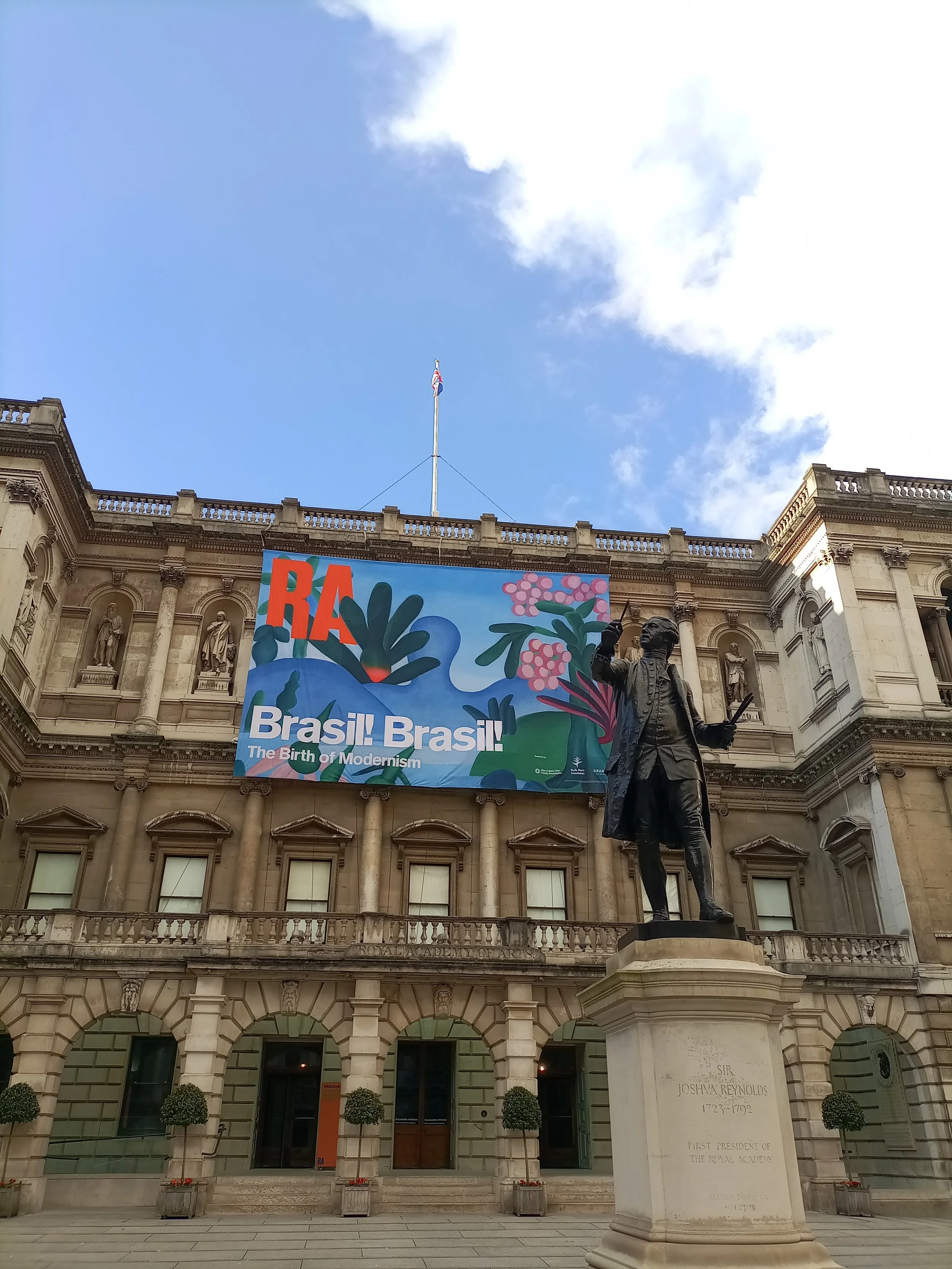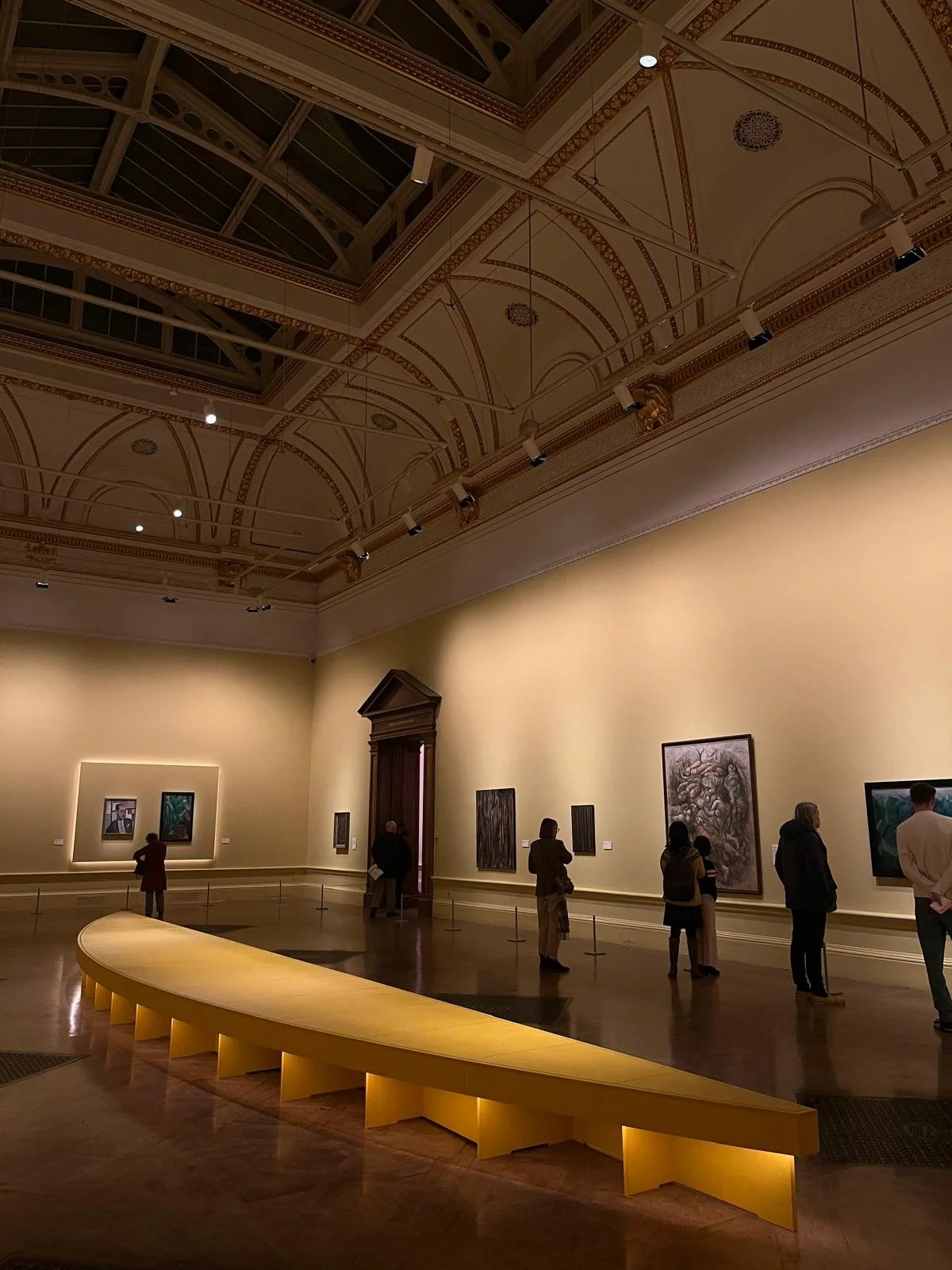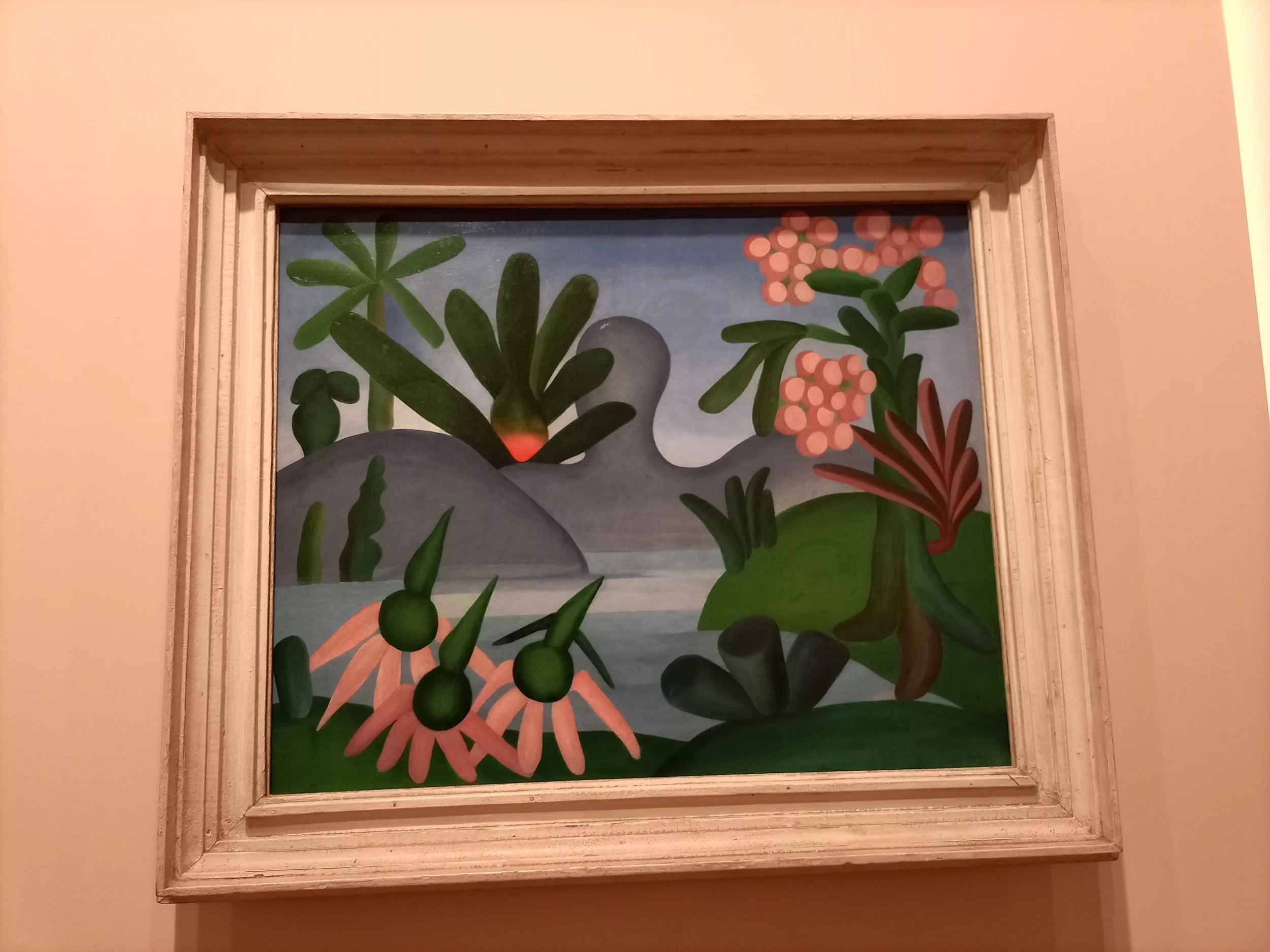‘Brasil! Brasil!’ and the legacy of the Cannibalist Modernists
Image belongs to author — The Royal Academy of Arts, London
When Oswald de Andrade’s Manifesto Antropófago was published in 1928, it was written based on the ideas discussed in the Semana de Arte Moderna in São Paulo in 1922. These notions ultimately stipulated a reevaluation of Brazil’s identity post-proclamation of the Republic in 1889, penning Ordem e Progresso not just on the new Brazilian flag, but also on its newly acquired spiritual freedom.
The work of Oswald altered the course of Brazilian cultural export, galvanising the public to question and reshape European cultural norms and ideals, reverting to a Brazilian-centric entity. So much so, the movement was used as a tool by Brazilian statesman Oswaldo Aranha to enhance diplomatic relations, subsequently hosting the biggest showcase of Modern Brazilian art of the time in 1944, at the Royal Academy in London. It contained 80 paintings and 86 works on paper.
Photo Credit: Dev Atara — Inside the exhibition
Fast-forward to 2025, just over 100 years on, this movement is being celebrated in Brasil! Brasil! The Birth of Modernism, an exhibition again held at London’s Royal Academy of Arts. What is particularly magical about the showing is that as you enter the first small gallery space, you are greeted by seven of the works that were all part of the original 1944 exhibition, with some of the canvases reunited for the first time in a century. The exhibition was organised so that attendees can trace (in no particular order) the development of styles of the ten allotted artists. The artists themselves vary in gender, origin, race and age. It proves to be an enriching mix of creators who cultivated staggering diversity through their works with the aim of discrediting European values that had penetrated Brazil since colonisation in 1500.
A noteworthy artist is Lasar Segall, who was born to a Jewish family in Lithuania who at the age of 34 migrated to São Paulo, and was taken in as a representative of the European avant-garde. Alongside two of his contemporaries, he founded the Sociedade Pró-Arte Moderna in 1932. It is interesting to note his strong connection to Brazil through his works, especially when we take into consideration that this was not his homeland. Suffice to say, he never forgot his Jewish roots. A marked theme in his work was immigration and suffering, not to mention the solemn faces and lack of expression in the majority of his paintings. His most famous work in this regard is Banana Plantation (1927). The portrait depicts a lush jungle of banana trees and a black worker in the centre of the canvas; our eyes are drawn to his ghoulish glare and pasty violet skin. Segall never shied away from representing ‘the other’, be that the African influence in Brazil, or his own Jewish roots, as evidenced in Pogrom (1937) depicting the anti-Semitic massacres that occurred in Russia.
Image belongs to author — ‘Favela Hill’, Tarsila do Amaral (1924)
Another artist whose work explores the role of the outsider was Djanira da Motta e Silva. Her indigenous roots were something that she embraced and incorporated into her art, in stark contrast to the extirpation of Brazilian native culture by the Portuguese colonists some 450 years earlier. As a female artist and anthropologist, she made her mark in the wake of Oswald de Andrade’s Manifesto, and was not the only artist to look to indigenous cultures for inspiration. Her most notable work is Flying a Kite (1950), a colourful display of community, childhood and innocence.
Another of the three female artists displayed in the exhibition is Tarsila do Amaral, widely recognised for her 1928 painting, Abaporu. The very meaning of the work in Tupi is ‘man that eats people’ and this is exactly what inspired her partner, Oswald de Andrade to write his Cannibalist Manifesto (Manifesto Antropófago). Admittedly, is it refreshing to see Tarsila in her own right having spent years classified as Oswald’s muse and sidelined for being a woman. However, he remained adamant that it was her who inspired him to write his greatest publication. She was a member of Grupo dos Cinco who were a group of five writers and painters associated with Brazilian Modernism. Whilst Tarsila did not participate in the infamous Semana de Arte Moderna, the group were best known for contributing to putting São Paulo on the map and making it the home of a new Modernist movement (as opposed to Rio which was conservative at the time).
Image belongs to author — ‘The Lake’, Tarsila do Amaral, 1928
The last two artists in the exhibition worked outside of the painting realm with the self-professed ‘artist-priest’ Rubem Valentim’s visual language, and Geraldo De Barros’ manifold virtues in geometric abstraction and Concrete aesthetic nicely concluding the exhibition. Admittedly, because of the scope and visual intensity of the collection, upon visiting the final two rooms, it is easy to simply brush past the works of these two artists, pigeonholing them as the colourful shapes at the back.
Looking around the exhibition, it is clear to see how Oswald de Andrade’s Anthropophagic approach has shaped the course of Brazilian Modernism. ‘The Anthropophagics’ (otherwise known as the cannibalists) were keen to learn from the European influences exported to Brazil, but use this to inspire their own productions and showcases; playing into the cannibalist trope: eating up hegemonic ideas, digesting them, then creating new and better ones. Whilst cannibalism isn’t usually in our lexicon in relation to art, this exhibition truly renders itself a legacy to the cannibalist modernists.



